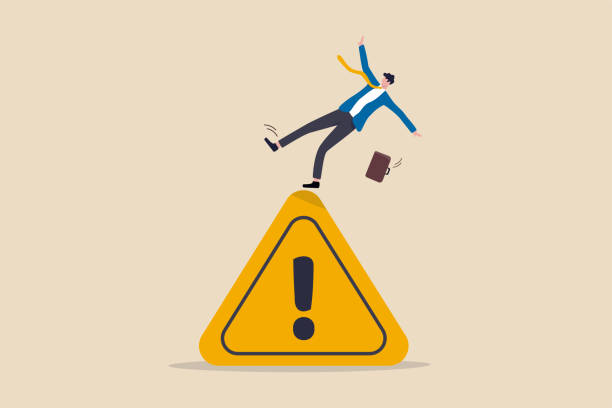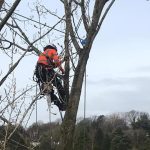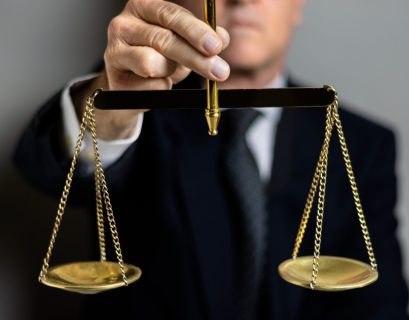Slip and fall accidents are:
- A frequent source of personal injury claims.
- Posing significant risks to businesses in terms of legal costs.
- Reputation.
- Operational disruption.
As a business owner, it’s essential to understand how negligence is proven in these cases, how to mitigate risks proactively, and how to handle claims effectively.
This guide outlines maintaining safe premises, responding to incidents, and building a solid defense against slip and fall claims. It also provides insight into settlements, often a practical solution for resolving disputes.
Understanding Negligence: The Four Key Elements
To win a slip and fall claim, plaintiffs must establish that their business was negligent. This involves proving four elements:
- Duty of Care: Businesses are legally obligated to maintain reasonably safe premises for customers, employees, and visitors.
- Breach of Duty: Plaintiffs must show that the business failed to meet this duty, such as neglecting to address a hazard or providing adequate warnings.
- Causation: There must be a direct link between the unsafe condition and the plaintiff’s injury.
- Damages: The injury must result in measurable harm, such as medical bills, lost wages, or emotional distress.
Understanding these elements helps businesses pinpoint vulnerabilities and prepare for potential claims.
Proactive Safety Measures: Reducing Risk
The best defense against slip and fall claims is prevention. By implementing proactive safety measures, businesses can demonstrate their commitment to maintaining a safe environment and minimize liability risks.
- Regular Inspections: Conduct thorough inspections of your premises to identify and address hazards like wet floors, loose tiles, or poor lighting. Use checklists to ensure every area is noticed.
- Employee Training: Train staff to promptly recognize and report hazards, clean spills, and use proper signage for dangerous areas. A well-trained team can prevent many accidents.
- Documentation and Maintenance: Keep detailed records of inspections, maintenance activities, and hazard reports. This documentation can serve as critical evidence if a claim arises, demonstrating that your business took reasonable steps to maintain safety.
Responding to Incidents: Key Steps
Despite best efforts, accidents can happen. A prompt and effective response to a slip and fall incident is crucial to protecting your business.
- Investigate Immediately: Document the scene of the accident thoroughly. Take photos of the area, note any visible hazards, and record environmental factors like lighting and weather.
- Collect Witness Statements: Obtain contact information and statements from employees, customers, or others who witnessed the incident or the conditions leading to it.
- File an Incident Report: Create a detailed incident report that includes the time, location, description of the hazard, and actions taken immediately after the fall.
- Preserve Evidence: Save surveillance footage, maintenance logs, and other records relevant to the incident. These materials can clarify and support your defense if a claim is filed.
Building a Strong Defense Against Claims
When a slip and fall claim arises, the plaintiff’s case typically focuses on alleged lapses in safety. Preparing a solid defense involves showing that your business acted responsibly and addressing common legal arguments.
Proving Knowledge of Hazards
Plaintiffs must demonstrate that their business knew or should have known about the hazardous condition. They will argue either:
- Actual Knowledge: The business was directly aware of the hazard.
- Constructive Knowledge: The hazard existed long enough that the business should have discovered and addressed it.
Thorough inspection logs and prompt hazard mitigation efforts can show that your business took reasonable steps to maintain safety.
Countering Common Claims
Be prepared to address these frequent arguments:
- The Hazard Was Long-Standing: Use maintenance records to demonstrate that hazards were promptly identified and resolved.
- Warnings Were Insufficient: Photos or testimony showing clear signage or barriers can refute claims of inadequate warnings.
- The Business Was Solely Responsible: Surveillance footage or witness statements may show that the plaintiff contributed to the accident by ignoring warnings or being distracted.
Understanding Slip and Fall Settlements
Many cases are resolved through slip and fall settlements rather than going to trial. Settlements allow both parties to avoid court proceedings’ time, expense, and uncertainty. Settling a case can minimize legal costs and prevent negative publicity for businesses.
Settlement amounts depend on factors such as the severity of the injury, the strength of the plaintiff’s evidence, and whether your business’s negligence can be demonstrated. While agreeing to a settlement may feel like admitting fault, it’s often a strategic decision to avoid prolonged litigation and the unpredictability of jury verdicts. Engaging an experienced attorney ensures that any settlement agreement is fair and aligns with your business’s long-term interests.
Legal Support: Strengthening Your Defense
Slip and fall claims can be complex; navigating them without legal guidance is risky. Retaining an experienced attorney helps ensure your business is adequately represented. Attorneys can:
- Investigate the claim to determine its validity.
- Gather evidence, such as subpoenaing surveillance footage or maintenance logs.
- Negotiate with insurers to secure a fair resolution through settlement or litigation.
With professional legal support, your business can mount a vigorous defense while remaining compliant with legal requirements.
Act Quickly: Time Is Critical
Most states have a statute of limitations for slip and fall lawsuits, typically one to three years. Acting quickly ensures that evidence remains intact and witnesses’ memories are fresh. Prompt action also signals your business’s commitment to safety and accountability.
Conclusion: Prevention and Preparedness Are Key
Slip and fall cases are a reality for businesses, but they don’t have to be a major liability. By prioritizing safety, training employees, and maintaining thorough records, you can reduce the likelihood of accidents and demonstrate due diligence.
When incidents occur, responding swiftly, preserving evidence, and seeking legal guidance are your best tools for mitigating risks and protecting your business. Whether through proactive prevention or strategic settlement, effectively managing slip and fall claims is essential to safeguarding your operations and maintaining customer trust.













